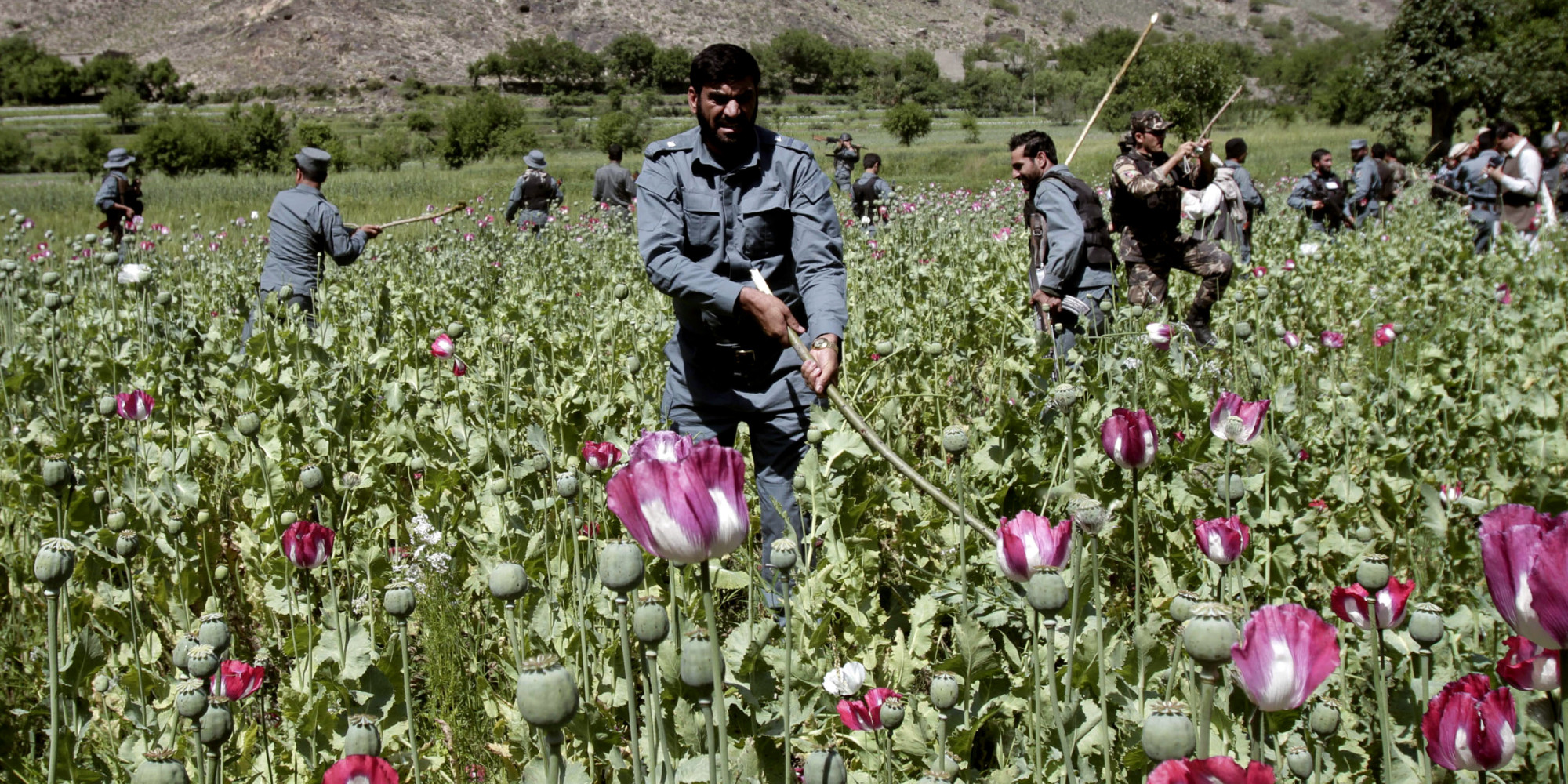Afghanistan opium trade
November 19, 2016 | Expert Insights
On 23 October 2016, UN Office for Drugs & Crime (UNODC) announced that in 2016, Opium cultivation in Afghanistan had grown 43% over 2015. The report shows that 201,000 hectares of land, were used for Opium cultivation. Unlike preceding years, the Afghan Government Opium Eradication Program has had a very poor impact; due to poor security situation, logistic and financial challenges. Estimates suggest that 4800 MT of Opium were produced in 2016, in comparison to 3300 MT, in 2015. Yury Fedotov, Director UNODC said the trend was worrisome and urged the international community, to help achieve sustainable goals.
Why is Opium Grown in Afghanistan?
Opium from Afghanistan is called ‘Golden Crescent’ opium, in drug circles and has been on the rise, since 2001, when US occupation started. Export value of Afghanistan’s illegal opium, is estimated at US$ 4 Billion but less than 25% is retained by the farmer. The Southern region, particularly Helmand Province, which recently saw Taliban resurgence, is the most productive area for Poppy. In 2004, Muslim clerics issued a Fatwa claiming that Opium production, is contrary to Sharia Law. However, in the last decade, both the Taliban and the Karzai government have protected the Opium trade, while US forces have turned a blind eye.
What are the Dynamics of the Drug Mafia?
Each Kg of Opium produces 100 gms of more addictive Heroin. Though Opium is also used to produce the pain-killer drug, Morphine, Afghanistan’s production is used primarily in illegal drug trade. The global narcotics market is estimated at US$ 500 Billion and 70% of the contribution comes from Afghan Opium. Heroin is sold illegally in Western markets and the money is laundered through offshore banking havens like Switzerland, Luxembourg, British Channel Islands, Cayman Islands and 50 other such possible destinations. After laundering, the money is used in Real Estate, Hotels, Gambling and other such activities.
Who benefits from illegal Afghan Opium cultivation?
Afghanistan’s insurgency is fuelled both directly and indirectly by the illegal Poppy cultivation. However, the challenge is multi-dimensional affecting the livelihood of farmers, corrupt bureaucracy, power mongers and the international drug mafia. As the Director of UNODC reiterates, a comprehensive strategy involving Afghan society, health-workers, poverty-alleviation programs, gender inequality amongst others, shall be needed to deal with this menace, holistically.


